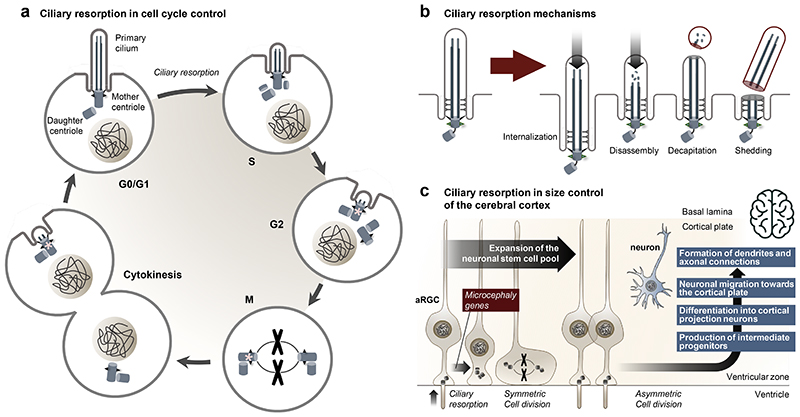Figure 3. Ciliary dynamics.
a, Assembly and disassembly of primary cilia are tightly coordinated with the cell cycle. A single primary cilium assembles from the mother centriole in G0/G1 phase, and the cilium is resorbed during the G1/S and M phases to liberate duplicated centrioles for mitotic spindle pole formation. At the end of cytokinesis, the daughter cell inheriting the oldest mother centriole (marked with an asterisk), will begin forming a new primary cilium prior to the other daughter cells. b, Schematic illustration of different modes by which a cilium can be resorbed. c, During development of the cerebral cortex, apical radial glia cells (aRGC) primary cilia, which project into the ventricular lumen, are resorbed to allow expansion of the neural stem cell pool by symmetric cell divisions. By asymmetric cell divisions, aRGCs subsequently form intermediate progenitors that differentiate into cortical projecting neurons that migrate towards the cortical plate to form the dendrites and axonal connections. Consequently, dysfunction in the timely resorption of aRGC primary cilia is linked to proliferation–differentiation decision defects and reduced size of the cerebral cortex such as in microcephaly.

